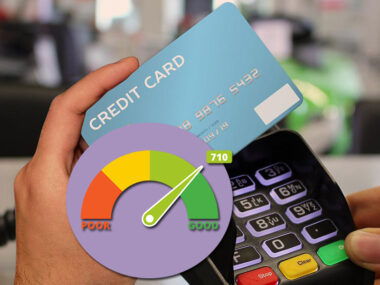It’s a good idea to check your credit score from time to time to see where your credit stands. If you’ve recently checked your score and found that it’s 683, you can rest in the fact that you have good credit.
The FICO credit scoring model consists of five different tiers. These are:
- Very Poor: 300 to 579.
- Fair: 580 to 669.
- Good: 670 to 739.
- Very Good: 740 to 799.
- Exceptional: 800 to 850.
A score of 683 falls in the mid-to-lower end of the “Good” range. While this is a solid score, it clearly leaves much room for improvement. This isn’t just a nice suggestion or a pleasant thought, either. With your score so close to the “Fair” range, it’s important to make a concerted effort to move the needle higher in the future.
This process starts with analyzing how you got to your current score of 683. From there, you can begin to strategize ways to boost your credit score over time.
Table of Contents
Why Your Credit Score Is 683
No two credit scores are the same. Sure, the number may be identical at times, but even then the calculations that go into scoring each specific score are unique to the individual that owns it.
This is because your credit score reflects a summation of your past financial behavior. In other words, your good and bad financial decisions have helped and hurt your score, respectively.
With that said, consider the following factors. Each one is an integral part of your score’s makeup. Review each one and assess if it’s had an overall positive or negative impact on your score.
Payment History
Whether or not you make your payments consistently is the most essential factor behind your credit score. The simple act of making payments on time can decide as much as 35% of your total credit score.
Think about your past behavior. Have you always made your payments on time, or is it something that you occasionally let slip under the radar?
Derogatory Marks
If you chronically miss payments for extended periods, it can lead to a derogatory mark on your credit report. This can be concerning a variety of different debt-related scenarios, such as:
- A missed payment on a credit account or a loan;
- A claim from a collection agency;
- Repossession of an item;
- A foreclosure of a home;
- A tax lien or debt settlement;
If you have a derogatory mark on your credit report, it can last for several years. It’s important that you take steps to resolve the situation. Then send a goodwill letter to the original lender asking them if they would be willing to remove the derogatory mark proactively before the requisite time is up.
As a quick aside, you can also have a mark on your report from a hard inquiry. This takes place when a lender officially checks your credit to judge if they should give you a loan.
While this can temporarily hurt your score, it should only last for up to a year. This shouldn’t be a problem unless you have several hard inquiries close to one another.
Credit Utilization Ratio
Your credit utilization ratio is the amount of your revolving credit that you’re actively using. For instance, if a credit card has a $5,000 limit and you’ve used $4,000, your credit utilization ratio is at an uncomfortable 80%.
Consider how you use your revolving credit. If all of your lines of credit get to be over 30%, it can start to negatively impact your score.
Your Total Debt
Along with your use of your revolving credit, it’s also important to consider how much non-revolving credit you have. This consists of one-time loans, such as an auto loan or a mortgage, which you pay back over an extended time.
If you have an excessive amount of non-revolving credit, it can be a warning sign to potential lenders. It can also impact your credit score for the worse.
Credit Age and Mix
Finally, there is the average age and mix of your credit. Simply put, the older your credit is, the higher your score will be. This means younger individuals or those who have recently opened up a line of credit can have lower scores.
The variety of your credit also matters. If you only have one form of credit, such as a single auto loan or one credit card, it can stunt your credit score. However, if you can show an ability to responsibly handle multiple forms of credit, it may send your score higher.
What Can You Do With a 683 Credit Score?
Before moving on to ways to improve your credit score, it’s worth taking a moment to bask in the pleasure of actually having a Good credit score. With a score of 683, you have officially arrived in the world of good credit. This gives you access to many different financial benefits, such as:
- Passing an employer credit check when applying for a job;
- Getting easier approval for a mortgage, refinance, or personal loan;
- Qualifying for higher credit limits and lower interest rates;
- Being approved by a landlord and having to pay smaller security deposits;
- Gaining access to certain credit card rewards and benefits;
- Having more negotiating power with lenders.
These are all wonderful aspects of having good credit. However, many of them — like credit card rewards or higher borrowing limits — are naturally more pronounced if you can get your score into the “Very Good” or “Exceptional” ranges.
How to Improve a 683 Credit Score
If you want to lock in your ability to enjoy the various benefits of good credit, it’s wise to take steps to preserve and even improve your credit score. You can do this by:
- Creating and sticking to a budget;
- Paying off your revolving debt every month;
- Paying down your non-revolving debt as much as possible;
- Reviewing your credit report annually to dispute errors and fix derogatory marks.
- Creating a long-term financial plan to use as a road map to better credit.
Use the above recommendations to form good financial habits and create a credit-boosting strategy. You can tailor this strategy to your knowledge, particularly based on what you learned from studying the various factors that go into creating your score. If you do this effectively, it will take your score from good to great.
Image Source: https://depositphotos.com/





